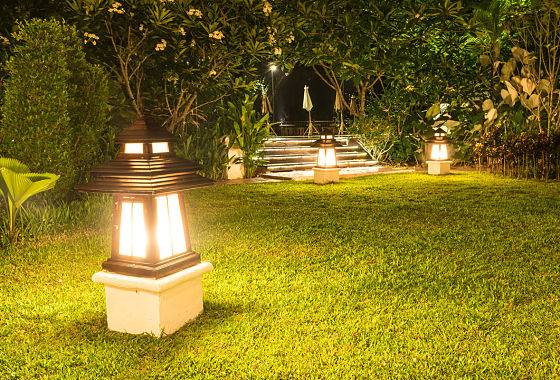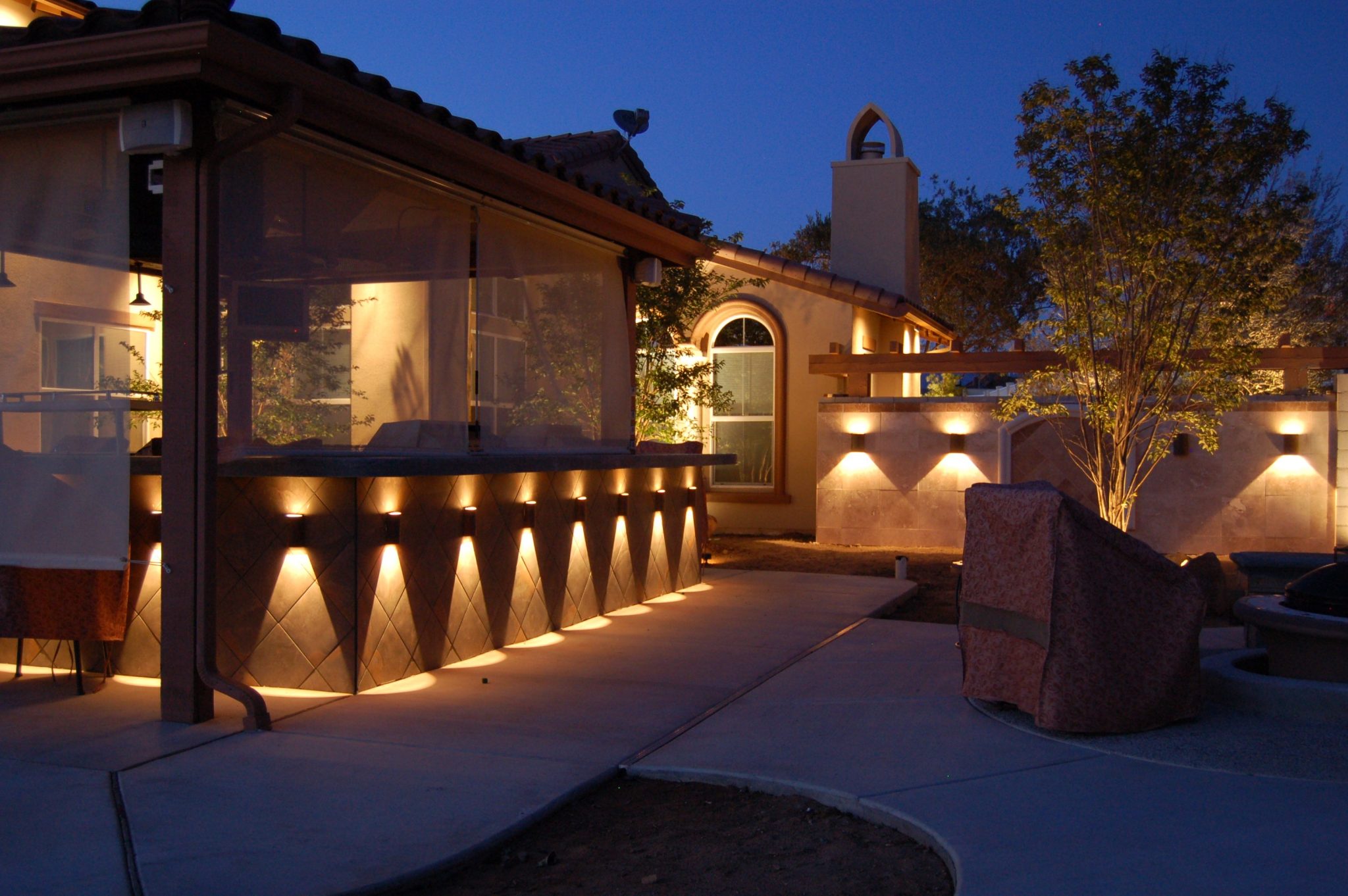Outdoor lighting does more than extend the use of exterior spaces after dark—it plays an active role in shaping how landscapes are experienced, understood, and enjoyed. When used intentionally, lighting draws attention to architectural features, defines spatial flow, enhances safety, and brings visual contrast that transforms landscapes at night. Both residential homeowners and commercial property managers benefit from the practical and aesthetic impact of a well-lit landscape.
Lighting Accentuates Key Landscape Features
Professional outdoor lighting service provides targeted visual emphasis that helps guide attention to important focal points in the design. By shaping shadows, creating contrast, and framing sightlines, light becomes a design tool in its own right.
Highlighting Architectural and Natural Elements
Spotlights and uplighting techniques can make static elements stand out at night:
- Trees and shrubs gain depth through uplighting from the base
- Statues, pergolas, or water features appear more dimensional
- Textures on brick, stone, or stucco become more visible with side lighting
This added emphasis helps reinforce symmetry, hierarchy, or rhythm already established in the daylight layout.
Framing Entry Points and Transitions
Entrances, steps, and pathway intersections benefit from lighting that marks direction and adds structure.
- Bollard lights or recessed fixtures frame walkways
- Lanterns or wall-mounted lights define entry zones
- Motion-activated or timed lights ease transitions from indoor to outdoor use
Consistent lighting around access points also supports safety while blending seamlessly with landscape aesthetics.
Outdoor Lighting Extends Functionality and Use
Lighting expands the usability of exterior spaces, making patios, walkways, and gathering areas functional beyond daylight hours.
Evening Usability of Outdoor Areas
Strategically placed light fixtures create inviting outdoor zones that feel both accessible and comfortable at night.
- Deck lighting enables dining and entertainment after dark
- Garden perimeter lighting extends visual access to landscape features
- Heated patio areas often include dimmable lighting to support ambiance
When lighting supports function, residents and visitors are more likely to use and appreciate outdoor areas fully.
Light Temperature and Color Affect Ambience
The warmth or coolness of outdoor lights affects how spaces feel:
- Warm white (2700K–3000K): Creates a relaxing, welcoming tone
- Neutral white (3500K–4000K): Balanced brightness for walkways and signage
- Cool white (5000K+): Crisp and alert lighting for security zones or modern designs
Matching the lighting temperature with the intended use helps shape the atmosphere and supports visual coherence.
Lighting Improves Safety and Visibility
A landscape may be visually appealing, but if it becomes hazardous at night, the design fails in a functional context. Proper lighting improves navigation, reduces risk, and deters intrusions.
Safer Walkways and Stairs
Low-mounted or recessed lighting improves step visibility without creating glare.
- Step lights reduce trips or falls on uneven paths
- Pathway lights illuminate edges and transitions
- Solar stake lights offer flexible placement without trenching
Adding consistent lighting around outdoor circulation paths is one of the most direct safety upgrades available.
Perimeter and Motion Lighting for Security
Exterior lighting plays a preventative role in deterring unauthorized access and boosting peace of mind.
- Floodlights activate when motion is detected
- Timed lighting cycles simulate occupancy
- Wall-mounted fixtures near entrances reduce hiding spots
In commercial spaces, lighting levels can also support camera clarity for surveillance systems.
Lighting Enhances Landscape Aesthetics at Night
Landscaping is often designed with daytime viewing in mind, but nighttime lighting can introduce a second layer of visual interest and contrast.
Creating Depth and Shadow Play
Light placement creates visual layers by emphasizing form, depth, and separation.
- Uplighting trees from multiple angles reveals structure
- Downlighting on walls creates soft gradients and shapes
- Silhouetting large plants or sculptures adds artistic texture
These effects make a nighttime landscape feel curated and expressive.
Balancing Light and Darkness
Effective landscape lighting includes restraint. Total brightness isn’t the goal—contrast between light and shadow makes features stand out more vividly.
- Lighting only key areas prevents visual overload
- Dimmer-compatible systems allow for adjustment based on need
- Dark zones preserve nighttime views and prevent light pollution
This balance supports both aesthetics and ecological responsibility.
| Lighting Technique | Visual Effect | Best Used For |
|---|---|---|
| Uplighting | Dramatic shadows, vertical emphasis | Trees, columns, large shrubs |
| Downlighting | Soft, natural light feel | Patios, seating areas, walkways |
| Grazing | Texture highlighting | Stone walls, fences, architectural walls |
| Silhouetting | Bold shape contrast | Sculptures, topiary, feature plants |
| Pathway lighting | Visibility and navigation | Walkways, garden paths, steps |
Outdoor Lighting Systems Offer Long-Term Efficiency
Technological advancements have made outdoor lighting more energy-efficient and cost-effective. Long-lasting systems reduce upkeep and environmental impact.
LED and Low-Voltage Systems
A professional lawn care service uses LED technology for performance and efficiency.
- LEDs last 25,000+ hours and use 80% less energy
- Low-voltage systems are safer and simpler to install
- Smart LED systems integrate with timers or sensors for automation
These systems support sustainability goals without compromising lighting output or flexibility.
Timers, Zones, and Automation
Segmented lighting zones allow for different areas to operate independently, based on need or schedule.
- Motion sensors activate only when movement is detected
- Timers support dusk-to-dawn functionality
- Wi-Fi–enabled lighting can be controlled remotely
This flexibility enhances efficiency and ensures areas are lit only when required.
Outdoor Lighting Elevates Property Value and Perception
Property appearance affects real estate value and community reputation. Professionally designed lighting contributes to both by enhancing curb appeal and reinforcing investment.
First Impressions and Nighttime Curb Appeal
Properties that look organized and welcoming at night leave lasting impressions:
- Well-lit homes feel safer and better maintained
- Commercial landscapes with lighting appear more professional
- Community areas with uniform lighting promote pride of place
Lighting builds consistency between day and night presentation.
Increased Property Appraisal and ROI
Landscaping enhancements, including lighting systems, are known to contribute to resale value.
- Outdoor lighting can yield up to 50% return on investment
- Homes with nighttime curb appeal sell faster in many markets
- Commercial spaces with security lighting attract longer-term tenants
In both residential and commercial sectors, lighting contributes to broader value retention and appeal.
Conclusion
Outdoor lighting does more than illuminate—it directs attention, enhances function, and shapes how landscapes are experienced after dark. By highlighting key features, improving safety, and adding aesthetic depth, lighting bridges the gap between form and function.
Whether for a home patio or a commercial entrance, a professional lawn and landscape company supports long-term usability and landscape value. When placed with intention and maintained with efficiency, lighting becomes an active, integral element of overall landscape design.
FAQs
How does lighting affect the overall design of a landscape? Lighting adds structure, direction, and focal contrast to the landscape. It shapes how viewers perceive depth, movement, and key features at night.
What are the best types of lights for outdoor landscaping? LED lights are preferred for energy savings and longevity. Uplights, path lights, downlights, and wall washers all serve different roles depending on placement and function.
Can outdoor lighting help with security? Yes. Perimeter lighting, motion sensors, and entryway lights deter unwanted activity and improve nighttime visibility around buildings and pathways.
How much lighting is too much for a landscape? Overlighting can cause glare, wash out design features, and increase energy use. Effective lighting uses contrast, shadow, and restraint to create visual interest.
Should lighting be included in the initial landscape design? Yes. Planning lighting early ensures proper wiring access, supports cohesive layout, and integrates visual balance from the beginning of the project.
Reviewer: Sophie Williams looked over this post and brought 7 years of field experience to her suggestions, helping ensure the content stays relevant to business owners and practical for everyday use.


